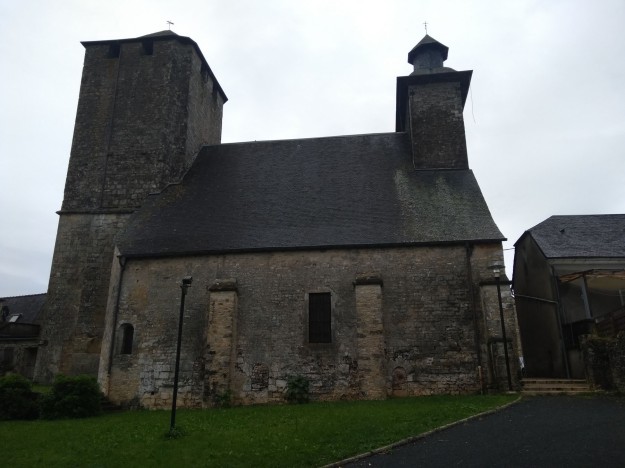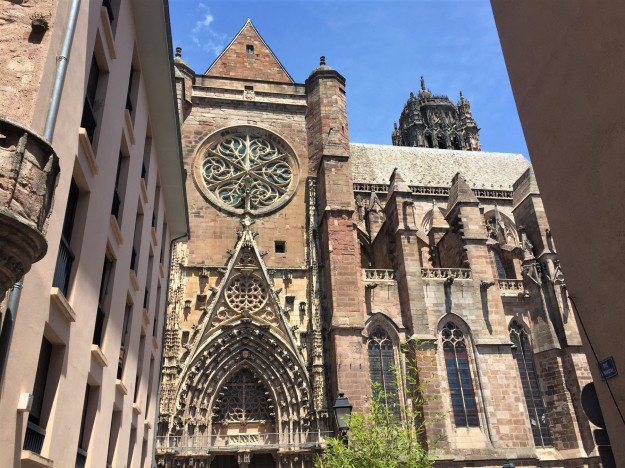After the glorious sun-filled days during friends and family visits, we had a return to the heavy rain of previous weeks. We had planned to leave early on a damp Wednesday morning, but a calamity of errors and minor issues (a broken chair, a collapsing rose trellis etc..) left us with a late afternoon departure. We drove south under grey skies smudged by thick raindrops, still intent on gaining some distance this day. After a quick consultation to change our plans due to the lateness of our exit, we agreed to a stop in the small village of Gignac (45.005852, 1.456925), a little way south of Brive-la-Gaillarde, to overnight, only two hours away from home.
Once settled in the free aire, we undertook a short exploratory walk around the village, mostly to stretch our legs. After a mini run-in with a couple of local dogs, we popped our heads in the open doors of the local church. Here we had a friendly chat with local gent, all in French, about the history of the building and its value to the village. His tales roamed from the Hundred Year’s war where the church had served, in the absence of any other fortifications, to hide the local population from the invading English, through later conflicts between Catholic and Protestant forces, to a description of a parade happening the following day to mark the 75th anniversary of the D-Day landings. An interesting and passionate chap, softly spoken and knowledgeable, and we felt honoured to have briefly shared his time and memories.
Thursday brought us a slow morning, warm and bright. With the rain gone and the sun out, we were ready to travel. We continued south-east, following two hours of winding, easy roads cutting through lush fields and plump woodland. Our route brought us directly to Rodez, and after a futile effort to park closer to the centre, we gave up and stopped in the aire outside of the city (44.357642, 2.594083) and walked in. Our trundle led us past the Église du Sacré-Cœur de Rodez before reaching the historic centre. We passed by the even more impressive Cathédrale Notre-Dame de L’Assomption, flanked by several medieval squares and many busy cafes. It was a hilly town and there were plenty of viewpoints with grand outlooks over the surrounding area. We sat to eat our lunch on a bench near the mairie and were passed by class after class of well-behaved primary school kids, the youngest classes hand-in-hand, making their way inside. We pondered on if they were visiting a municipal library rather than a civics tour.
Our lunch stop and city visit complete, we continued in the same direction, chasing the sun south. Our next stop was at the Viaduc de Millau. We avoided the toll road, instead driving underneath to a separate car-park area (44.097826, 3.024766) from where we could easily walk to the expo building and the designated view point. We crossed over to view the exhibition on local foods and watched several interesting videos on the bridge construction methods. Sir Norman Foster’s practice was instrumental in the design of the €400M project that utilised over 200K tonnes of concrete during the three years it took to construct. We climbed the short hill to enjoy the view and to marvel at the size and elegance of the build, and also at the sorry lack of any traffic crossing it, likely due to the toll.
We stood a while, soaking up the expansive vista and reflected that it was still only 24 hours since we left home and, although we’d not yet arrived in our main destination, we were already feeling like we’d had a fairly decent adventure.
A&N x









































































































